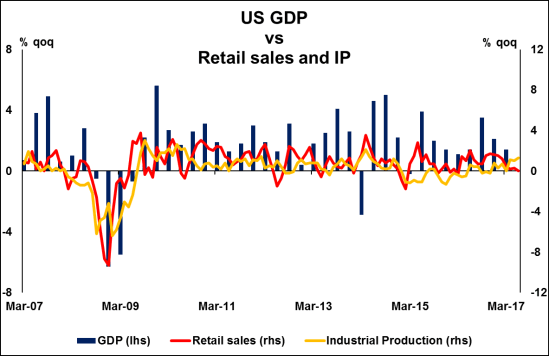Next week’s market movers
- In the US, the highlight will probably be the FOMC policy decision. Even though no change in policy is expected, investors may focus on any signals regarding the timing of the next rate hike.
- In Australia, CPI data for Q2 could shed some light on whether the RBA will officially turn hawkish soon. That said, comments from RBA’s Debelle suggest that rate-hike talk may still be premature.
- We also get key economic data from the Eurozone, Germany, the UK, the US, and Japan.
On Monday, we get the preliminary manufacturing and services PMIs for July from many European nations and the Eurozone as a whole. The forecast is for the bloc’s manufacturing index to decline slightly, but for the services print to tick up, something that would leave the composite figure unchanged. We think that relatively unchanged prints would still be encouraging news for ECB policymakers, considering that all of these indices are expected to remain at elevated levels, consistent with robust growth in the Eurozone. Solid PMIs could enhance speculation that the ECB may continue shifting to a more hawkish stance at its upcoming meetings, and that the Bank could make a formal announcement as early as October that the pace of QE purchases may be reduced by the turn of the year.
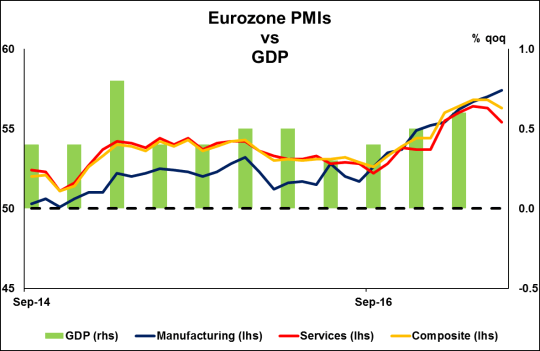
On Tuesday, we have a relatively quiet day, with no major events or indicators due to be released.
On Wednesday, the highlight of the day will be the FOMC rate decision and the forecast is for no change in policy. This is one of the smaller meetings that are not accompanied by updated forecasts or a press conference by Chair Yellen. As such, all of the action will come from the language of the statement accompanying the decision. What should investors expect from this meeting? Not much, we think.
Economic data following the Fed’s June policy meeting have been disappointing, on balance. The headline CPI rate declined again in June for the 4th consecutive month, casting doubts as to whether the recent softness in inflation is indeed transitory. Meanwhile, retail sales for the month surprisingly tumbled. What’s more, even though the labor market posted another month of solid jobs gains in June, we doubt that will be enough to comfort policymakers, considering that wage growth remains lackluster.
Bearing all these in mind, we think that the statement accompanying the decision may have a somewhat more cautious tone than previously, acknowledging the recent softness in the data. Even though the Committee could signal once more that it views this weakness as transitory and that it expects the indicators to recover soon, we find it difficult to envision a scenario in which policymakers appear optimistic enough to bring rate-hike expectations forward and boost USD. Market pricing currently suggests that the probability for another hike this year is roughly 50%. We believe investors may need to see a material rebound in inflation and GDP data, before that probability rises notably.
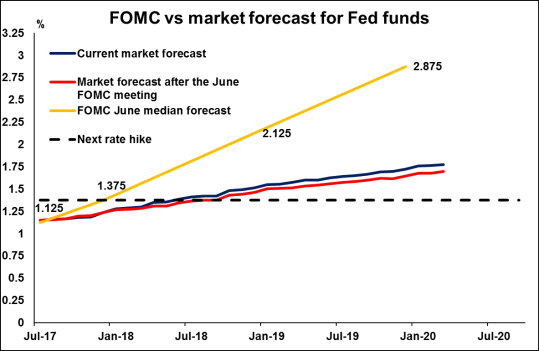
From Australia, we get CPI data for Q2. In the absence of any forecast, we see the case for the nation’s inflation rate to have ticked up from +2.1% yoy in Q1. We base our view on the Melbourne Institute inflation gauge, which rose to +2.3% yoy in June. Even though a potential acceleration in inflation could enhance speculation regarding a rate hike by the RBA in the foreseeable future, we remain doubtful on that prospect. Recent comments from RBA Deputy Governor Debelle suggest that rate-hike talk may still be premature. His remarks signaled that the Bank may be somewhat uncomfortable with the recent rise in Australian yields, as well as AUD appreciation. As such, we would like to hear from Governor Lowe, or wait for the next RBA meeting, before we become confident that the Bank may turn hawkish soon.
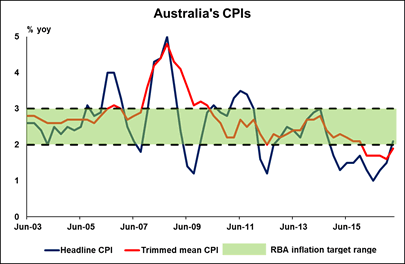
In the UK, the 1st estimate of GDP for Q2 will take center stage, though no forecast is available yet. Our own view is that growth may have accelerated somewhat from an anemic +0.2% qoq in Q1. We base this assessment on the nation’s NIESR GDP estimate, which shows growth ticked up to +0.3% qoq in Q2. Even though accelerating growth would be encouraging news for the BoE, we don’t think that +0.3% qoq is robust enough to boost market expectations regarding a hike in the near term.
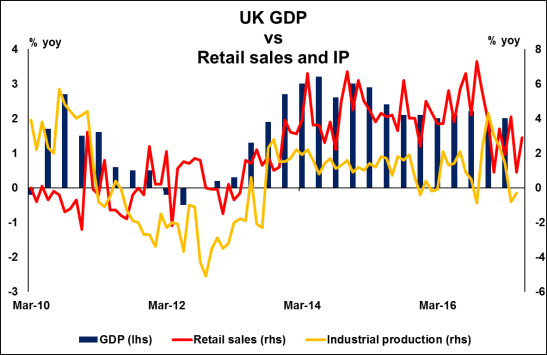
On Thursday, from the US, we get durable goods orders for June. The forecast is for both the headline and the core rates to have risen. This would mark a rebound for the headline print, which has fallen for two consecutive months now. The case for solid durable goods is supported by the nation’s ISM manufacturing PMI for June, the new orders sub-index of which rose notably, indicating accelerating growth in orders.
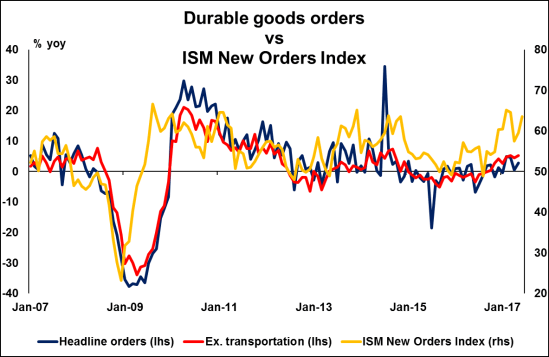
On Friday, during the Asian morning, Japan’s CPIs for June will be in focus. No forecast is available for the headline rate, while the core rate is expected to have held steady at +0.4% yoy. We view the risks surrounding both rates as skewed to the downside, considering that the nation’s forward-looking Tokyo CPI rates declined notably in June. A potential pullback in the nationwide rates as well could amplify our view that even though many of its foreign counterparts have turned hawkish, the BoJ is likely to keep its ultra-loose QQE with yield-curve control framework intact for the foreseeable future. Given that under this framework the BoJ keeps yields on longer-dated JGBs fixed near 0%, we maintain our broader view that JPY may continue to underperform EUR and CAD, given that the ECB and the BoC have turned optimistic.
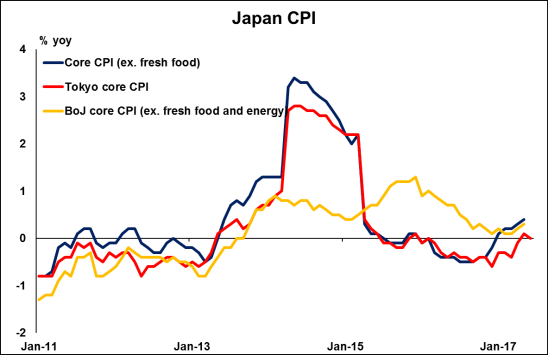
From Germany, we get preliminary CPI data for July, ahead of Eurozone’s figures that are due to be released the following Monday. The forecast is for the nation’s inflation rate to have ticked down. Even though such a decline could be seen as a somewhat discouraging development for ECB policymakers, we would like to stress that Germany reports only a headline, not a core, inflation rate. This implies that a small slide in this rate may be owed mainly to movements in the prices of volatile items, and may not necessarily be descriptive of underlying inflationary pressures in Eurozone’s largest economy. We think that investors will focus primarily on Eurozone’s core CPI print in order to gauge when and how the ECB may act next.
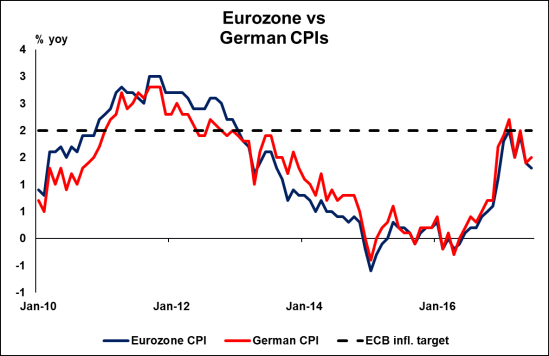
From the US, we get the 1st estimate of GDP for Q2. The forecast is for economic growth to have accelerated to +2.5% qoq SAAR from +1.4% qoq SAAR in Q1. The forecast is supported by the Atlanta Fed GDPNow model, which at the time of writing estimates Q2 growth at +2.5% qoq SAAR. We believe this indicator will be closely watched, as it may prove critical with regards to market expectations regarding the timing of the next Fed rate hike. Looking back at the June FOMC meeting, where the Committee raised rates, policymakers noted that even though growth was soft in Q1, they expected it to rebound soon. Therefore, if growth regains momentum as anticipated, that would confirm the Fed’s view that the slowdown in Q1 was only transitory, and is likely to heighten speculation regarding another rate hike this year.
